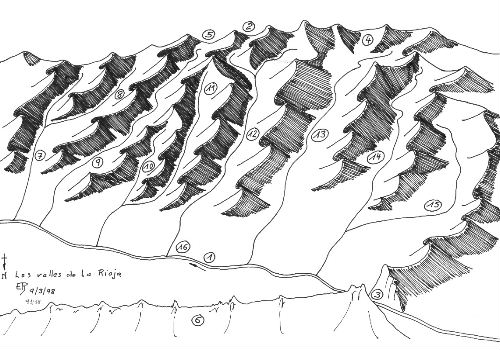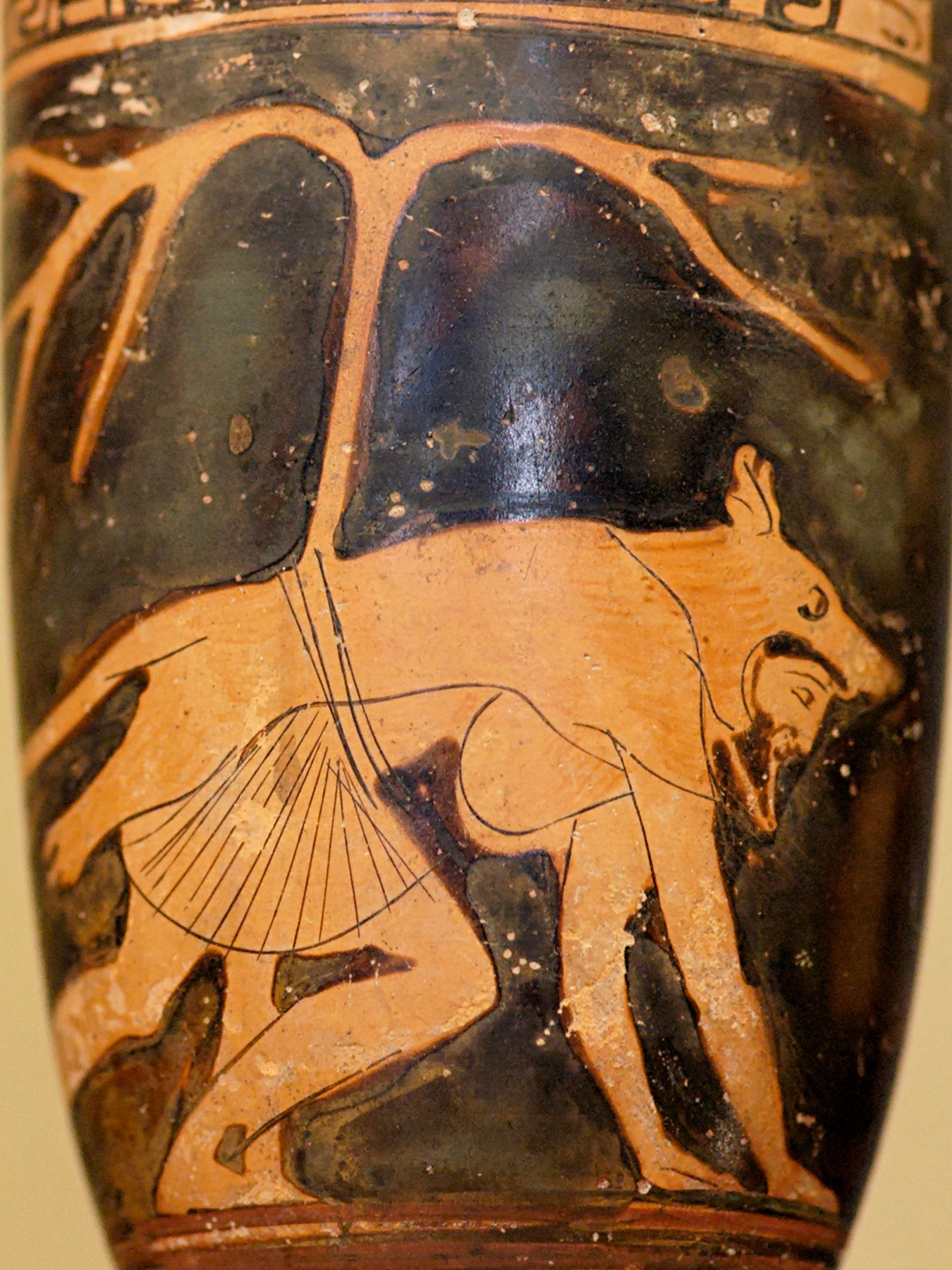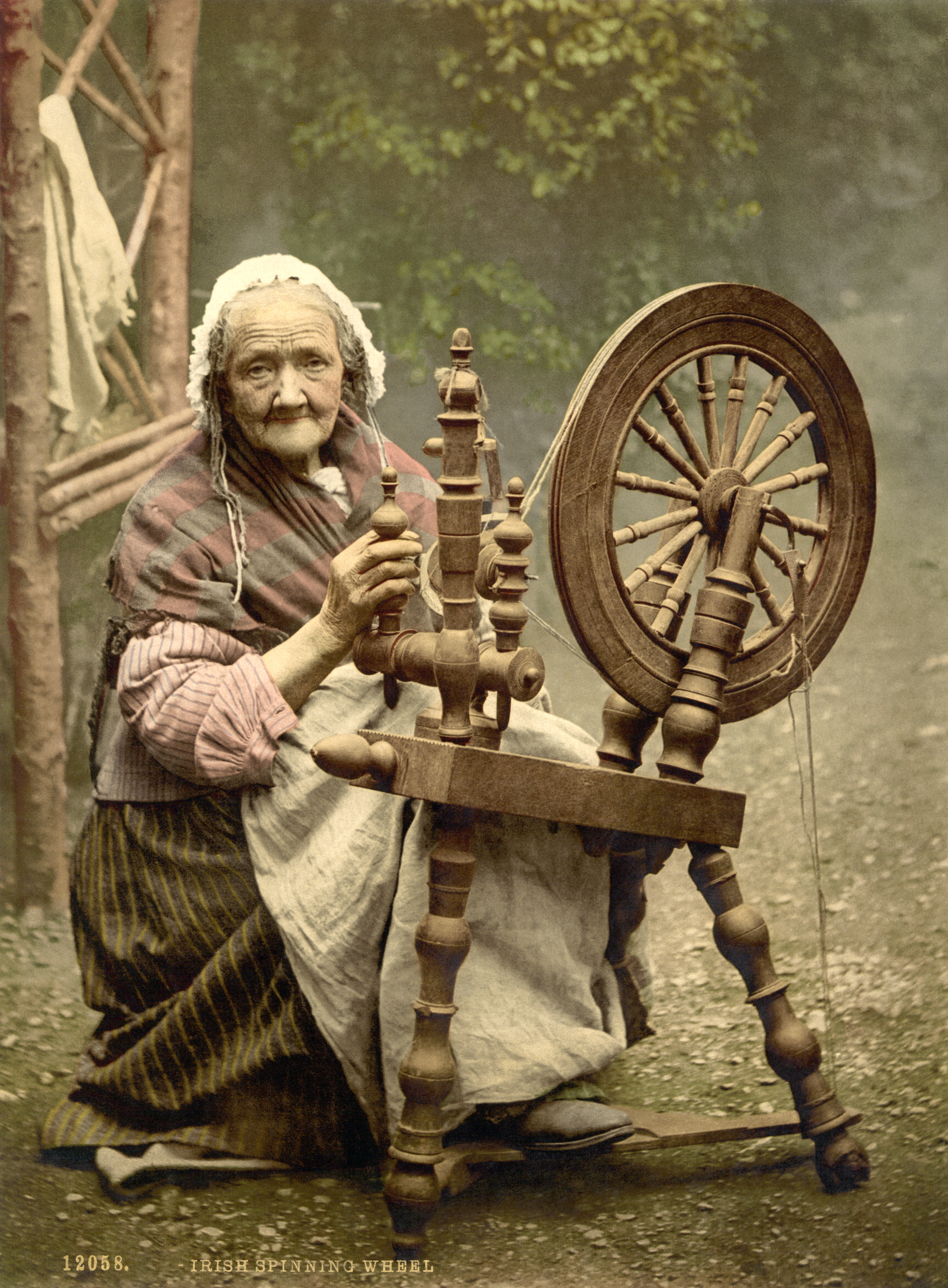|
Manuel Blanco Romasanta
Manuel Blanco Romasanta (né Manuela; 18 November 1809 – 14 December 1863) was Spain's first recorded serial killer. In 1853, he admitted to thirteen murders but claimed he was not responsible because he was suffering from a curse that caused him to turn into a wolf. Although this defence was rejected at trial, Isabella II of Spain, Queen Isabella II commuted his death sentence to allow doctors to investigate the claim as an example of clinical lycanthropy. Blanco has become part of Spanish folklore as the ''Werewolf of Allariz'' and is also known as ''The Tallow Man,'' a nickname he earned for rendering his victims' fat to make high-quality soap. Background According to various accounts, he was of small stature, between in height, blonde, and "tender looking." As an adult, he worked as a dressmaker and was married. He was widowed a year later but was not suspected of having had a hand in her death. Following the death of his wife in 1833, Blanco became a Peddler, travellin ... [...More Info...] [...Related Items...] OR: [Wikipedia] [Google] [Baidu] |
Esgos
Esgos is a municipality in the province of Ourense (province), Ourense, in the autonomous community of Galicia (Spain), Galicia, Spain. It belongs to the Comarcas of Galicia, comarca of Ourense (comarca), Ourense. References Municipalities in the Province of Ourense {{galicia-geo-stub ... [...More Info...] [...Related Items...] OR: [Wikipedia] [Google] [Baidu] |
Ponferrada
Ponferrada () is a city of Spain, located in the autonomous community of Castile and León. Ponferrada, the second most populated municipality of the Province of León, is also the capital city of El Bierzo, the only Comarcas of Spain, ''comarca'' recognized as an administrative entity by law in the region. Surrounded by mountains, the city straddles the course of the Sil (river), Sil River. It is the last major town on the French Way, French route of the Camino de Santiago before it reaches Santiago de Compostela. In 2021, it had a population of 63,747. Etymology Ponferrada comes from the Latin ''Pons Ferrata'', which it translates to Iron Bridge. History The place traces its origin back to 928 gifting to the of a ''Roman villa, villa'' between the Sil (river), Sil and the Boeza by Lupo and his wife, which possessed ''ferrum'' (iron) and was located at the feet of an abandoned Castros (Spain), castrum. The name of the city derives from the iron reinforcements added to the ... [...More Info...] [...Related Items...] OR: [Wikipedia] [Google] [Baidu] |
Phrenology
Phrenology is a pseudoscience that involves the measurement of bumps on the skull to predict mental traits. It is based on the concept that the Human brain, brain is the organ of the mind, and that certain brain areas have localized, specific Human brain#Function, functions or modules. It was said that the brain was composed of different muscles, so those that were used more often were bigger, resulting in the different skull shapes. This provided reasoning for the common presence of bumps on the skull in different locations. The brain "muscles" not being used as frequently remained small and were therefore not present on the exterior of the skull. Although both of those ideas have a basis in reality, phrenology generalizes beyond empirical knowledge in a way that departs from science. The central phrenological notion that measuring the contour of the skull can predict personality traits is discredited by empirical research. Developed by Germans, German physician Franz Joseph Ga ... [...More Info...] [...Related Items...] OR: [Wikipedia] [Google] [Baidu] |
La Rioja (Spain)
La Rioja () is an autonomous community and province in Spain, in the north of the Iberian Peninsula. Its capital is Logroño. Other cities and towns in the province include Calahorra, Arnedo, Alfaro, Haro, Santo Domingo de la Calzada, and Nájera. It has an estimated population of 315,675 inhabitants (INE 2018), making it the least populated autonomous community of Spain. It covers part of the Ebro valley towards its north and the Iberian Range in the south. The community is a single province, so there is no provincial deputation, and it is organized into 174 municipalities. It borders the Basque Country (province of Álava) to the north, Navarre to the northeast, Aragón to the southeast ( province of Zaragoza), and Castilla y León to the west and south (provinces of Burgos and Soria). The area was once occupied by pre-Roman Berones, Pellendones and Vascones. After partial recapture from the Muslims in the early tenth century, the region became part of the Kingd ... [...More Info...] [...Related Items...] OR: [Wikipedia] [Google] [Baidu] |
Lycanthropy
In folklore, a werewolf (), or occasionally lycanthrope (from Ancient Greek ), is an individual who can shapeshifting, shapeshift into a wolf, or especially in modern film, a Shapeshifting, therianthropic Hybrid beasts in folklore, hybrid wolf–humanlike creature, either purposely or after being placed under a curse or affliction, often a bite or the occasional scratch from another werewolf, with the transformations occurring on the night of a full moon. Early sources for belief in this ability or affliction, called lycanthropy, are Petronius (27–66) and Gervase of Tilbury (1150–1228). The werewolf is a widespread concept in European folklore, existing in many variants, which are related by a common development of a Christianization, Christian interpretation of underlying European folklore developed during the Middle Ages. From the early modern period, werewolf beliefs spread to the New World with colonialism. Belief in werewolves developed in parallel to the belief in Eu ... [...More Info...] [...Related Items...] OR: [Wikipedia] [Google] [Baidu] |
Allariz
Allariz is a town and municipality () in the province of Ourense, in the autonomous community of Galicia, Spain. It occupies the center of the western half of the province, connecting with the towns (''concellos'') of Taboadela, Paderne, Sandiás, Vilar de Santos, Rairiz de Veiga, Xunqueira de Ambía, A Merca and A Bola. The area of the municipality is 85,3 km² and there are 6.188 inhabitants in 16 parishes. The hydrographic system is made up of the River Arnoia, which crosses the municipality from east to west. The surrounding hills are covered with pine and native oak. The valley itself is very fertile and the river banks are lined with trees. The climate can be defined as inland Atlantic with continental influences. Summers are warm with highs averaging 25 °C, while winter highs average 12 °C. Allariz is a town which relies on tourism and proximity to the provincial capital of Ourense, fifteen kilometers away. Because of its picturesque location o ... [...More Info...] [...Related Items...] OR: [Wikipedia] [Google] [Baidu] |
Toledo (province)
Toledo () is a province of central Spain, in the western part of the autonomous community of Castile–La Mancha. It is bordered by the provinces of Madrid, Cuenca, Ciudad Real, Badajoz, Cáceres, and Ávila. Its capital is the city of Toledo. Demography Of the province's 711,228 people (2012), only about 1/9 live in the capital, Toledo, which is also the capital of the autonomous community. The most populated municipalities in the province are Toledo and Talavera de la Reina with 83,741 and 83,303 inhabitants each (INE, 2017). The province contains 204 municipalities. The smallest municipality in Spain, Illán de Vacas, with a population of 3, is in Toledo province. See List of municipalities in Toledo. Population development The historical population is given in the following chart: Colors= id:lightgrey value:gray(0.9) id:darkgrey value:gray(0.7) id:sfondo value:rgb(1,1,1) ImageSize = width:600 height:auto barincrement:30 PlotArea = left:40 bottom:40 top:20 ri ... [...More Info...] [...Related Items...] OR: [Wikipedia] [Google] [Baidu] |
Nombela
Nombela is a municipality of Spain belonging to the province of Toledo, Castilla–La Mancha. According to the 2006 census ( INE), the municipality has a population of 981 inhabitants. Geography Located in the central part of the Iberian Peninsula The Iberian Peninsula ( ), also known as Iberia, is a peninsula in south-western Europe. Mostly separated from the rest of the European landmass by the Pyrenees, it includes the territories of peninsular Spain and Continental Portugal, comprisin ... at about 490 metres above mean sea level, the town is the Spanish settlement furthest removed from the sea. History Nombela earned the status of 'town' (''villa'') in 1579. References ;Citations ;Bibliography * Municipalities in the Province of Toledo {{CastileLaMancha-geo-stub ... [...More Info...] [...Related Items...] OR: [Wikipedia] [Google] [Baidu] |
Escalona
Escalona is a municipality located in the north of the province of Toledo (province), Toledo, which in turn is part of the autonomous community of Castile-La Mancha, Spain. According to the 2017 census (Instituto Nacional de Estadística (Spain), INE), the municipality has a population of 3,240 inhabitants, many of whom live in the several housing estates outside the town itself. The town lies 30 metres above the right bank of the river Alberche, in the comarca of Torrijos, which is a part of the historical region of New Castile (Spain), New Castile. History Escalona's strategic location, on the Alberche river and between Avila and Toledo, suggests there may have been a fortress there in Roman times or during the Visigothic Kingdom, Visigoth period. Following the Siege of Toledo (1085), conquest of Toledo (1085), by Alfonso VI of León and Castile, it was a key defensive point against raids by the Almoravid dynasty, Almoravides and Almohad Caliphate, Almohades that attacked the ... [...More Info...] [...Related Items...] OR: [Wikipedia] [Google] [Baidu] |
Effeminate
Effeminacy or male femininity is the embodiment of feminine traits in boys or men, particularly those considered untypical of men or masculinity. These traits include roles, stereotypes, behaviors, and appearances that are socially associated with girls and women. Throughout Western civilization, men considered effeminate have faced prejudice and discrimination. Gay men are often stereotyped as being effeminate, and vice versa. However, femininity, masculinity, and other forms of gender expression are independent of sexual orientation Sexual orientation is an enduring personal pattern of romantic attraction or sexual attraction (or a combination of these) to persons of the opposite sex or gender, the same sex or gender, or to both sexes or more than one gender. Patterns ar .... Terminology ''Effeminate'' comes from Latin ''wikt:effeminatus, effeminātus'', from the factitive prefix ''ex-'' (from ''ex'' 'out') and ''femina'' 'woman'; it means 'made feminine, emasculated, ... [...More Info...] [...Related Items...] OR: [Wikipedia] [Google] [Baidu] |
Spinning Wheel
A spinning wheel is a device for spinning thread or yarn from fibres. It was fundamental to the textile industry prior to the Industrial Revolution. It laid the foundations for later machinery such as the spinning jenny and spinning frame, which displaced the spinning wheel during the Industrial Revolution. Function The basic spinning of yarn involves taking a clump of fibres and teasing a bit of them out, then twisting it into a basic string shape. The spinner continues pulling and twisting the yarn in this manner to make it longer and longer while also controlling the thickness. Thousands of years ago, people began doing this onto a stick, called a spindle, which was a very lengthy process. The actual wheel part of a spinning wheel does not take the place of the spindle; instead, it automates the twisting process, allowing one to "twist" the thread without having to constantly do so manually, and also the size of the wheel lets one more finely control the amount of twis ... [...More Info...] [...Related Items...] OR: [Wikipedia] [Google] [Baidu] |
Weaver (occupation)
Weaving is a method of textile production in which two distinct sets of yarns or threads are interlaced at right angles to form a fabric or cloth. Other methods are knitting, crocheting, felting, and braiding or plaiting. The longitudinal threads are called the warp and the lateral threads are the weft, woof, or filling. The method in which these threads are interwoven affects the characteristics of the cloth. Cloth is usually woven on a loom, a device that holds warp threads in place while filling threads are woven through them. A fabric band that meets this definition of cloth (warp threads with a weft thread winding between) can also be made using other methods, including tablet weaving, back strap loom, or other techniques that can be done without looms. The way the warp and filling threads interlace with each other is called the weave. The majority of woven products are created with one of three basic weaves: plain weave, satin weave, or twill weave. Woven cloth ca ... [...More Info...] [...Related Items...] OR: [Wikipedia] [Google] [Baidu] |








